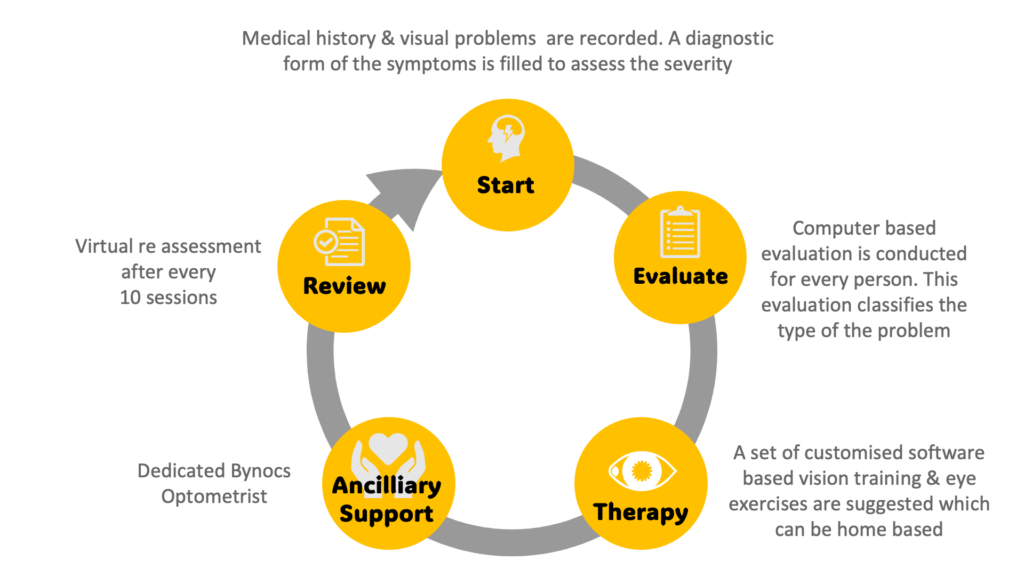Two Eyes
One Clear Image
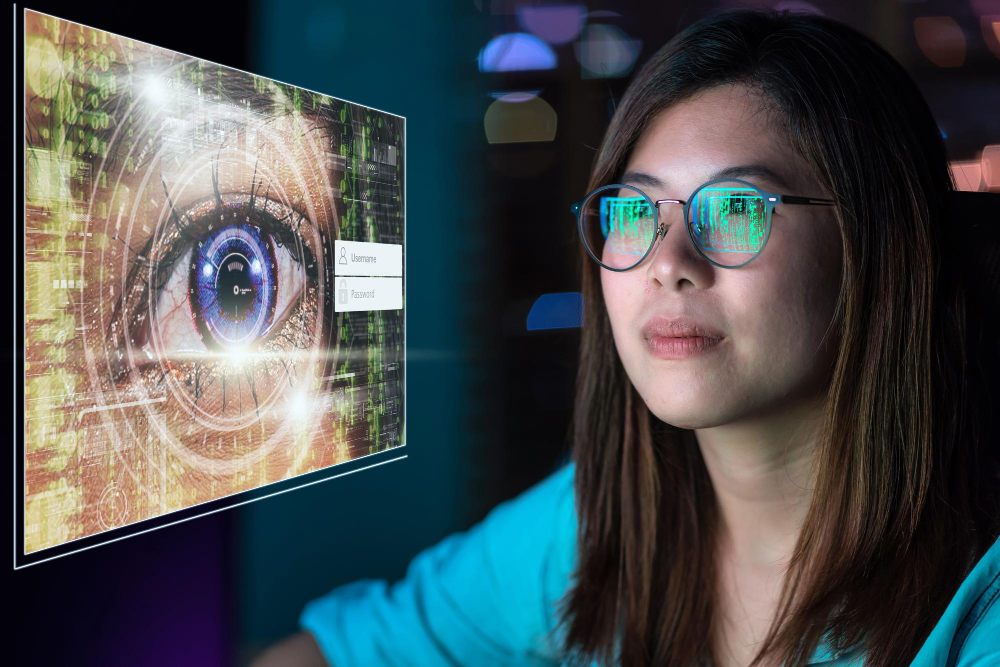
Binocular Vision Software
Binocular Vision is the ability to see with both eyes open, and the coordinated use of both eyes perceives a single image.
The process of binocular vision is complex teamwork of the two eyes working together in synergy with the brain. Each eye presents a slightly different image to the brain, and the brain blends the two dissimilar images into a single image by process of fusion.
Apart from giving a single image, binocular vision is also responsible for the perception of depth which is required for 3D vision.
When Does Binocular Vision Develop?
Binocular Vision begins to develop soon after birth. Significant focusing is achieved by six months of life. The accuracy and sharpness of images, along with depth perception, continue to develop between 4 and 9 years of life.
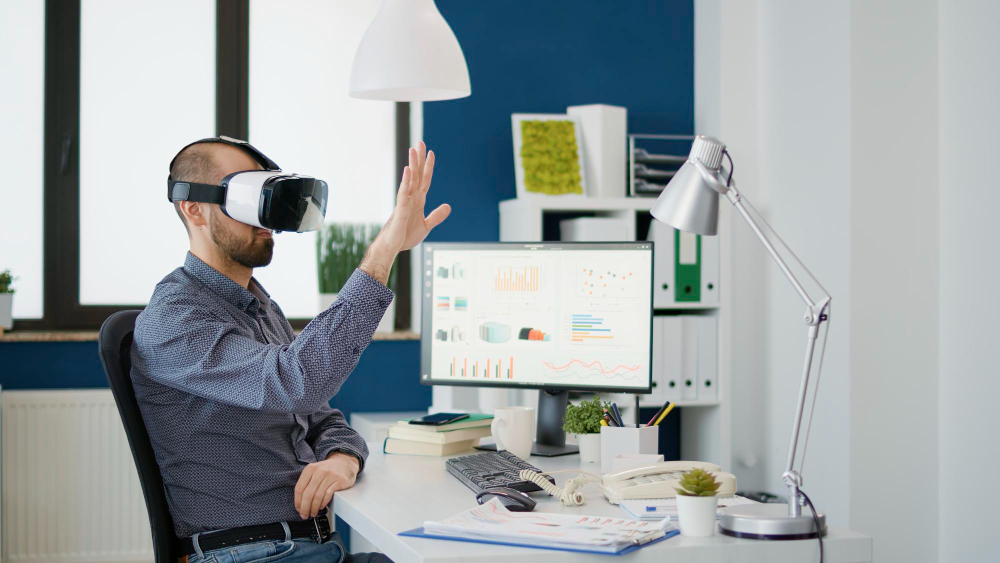
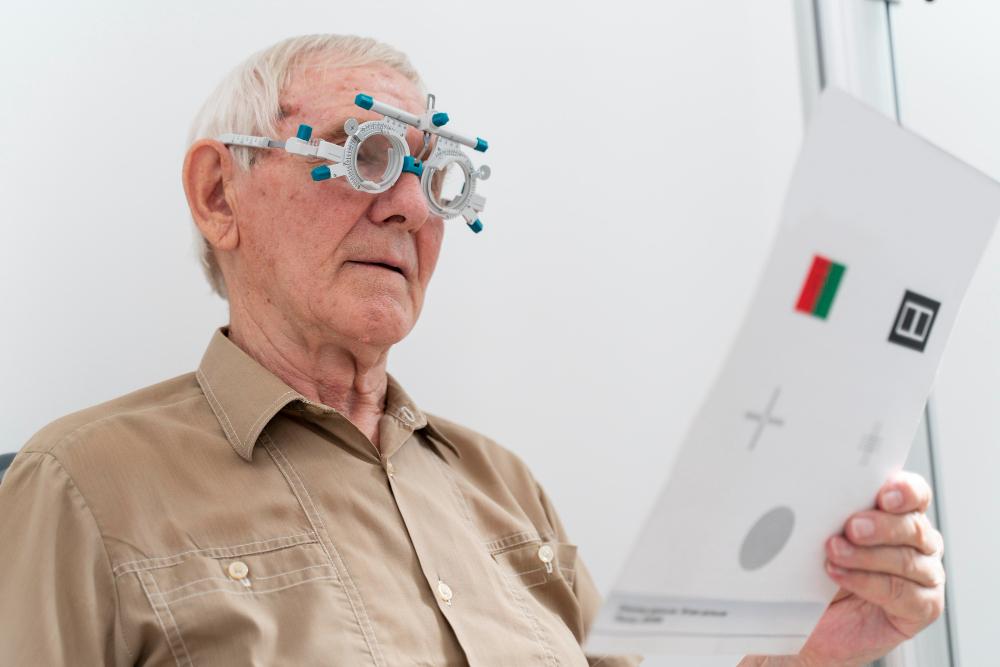
What happens when Binocular Vision is impaired?
- Lack of binocular vision leads to defect in Stereopsis or depth perception, which is critical to the formation of 3D vision. This is a critical attribute to the vision of humans and is responsible for its high-grade visual capability.
- Impairment of Binocular vision can lead to:
1) Lazy eye or Amblyopia
2) Strabismus or squint
3) Difficulty in reading, concentration and attention deficit affecting academic and work performance
Reasons for Binocular Vision impairment
- Reduced vision in one eye due to refractive error or congenital defects
- Lack of coordinated movements between the two eyes
- Neurological issues where the brain fails to perceive proper images
- Weakness in the focusing abilities of the eyes
The brain converges overlapping images into one clear picture, but for that, both the eyes must be in perfect alignment, working synchronously. When the two images do not colligate, the brain gets confused with processing the non-aligned images or inputs. In response, the brain forces the eye muscles to produce the alignment and fix the problem. When this happens repeatedly, it puts a lot of strain on the eye muscles making the person symptomatic.

Symptoms of Binocular Vision impairment
- Blurry, shadowed, or double vision
- Trouble holding eye contact.
- Poor hand-eye coordination.
- Poor depth perception.
- Light sensitivity.
- Difficulty with glare or reflection.
- Covering or squinting one eye to enhance vision.
- Headache
- Eyestrain
- Reading fatigue
- Double vision
- Repeated reading for comprehension
- Difficulty in concentrating
- Vibration of letters
- Eye pain and soreness
- Sensitivity to light and glare
- Difficulty while driving due to inability to judge distances and glare of headlights at night
- Difficulty while stepping down the staircase

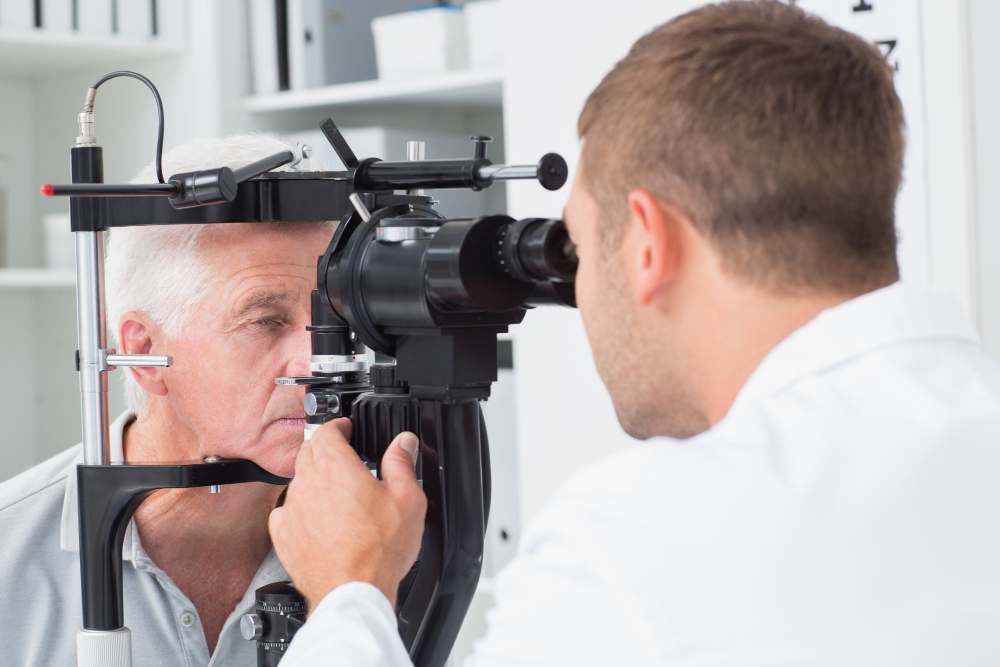
Why Would You Need Binocular Vision Therapy?
Many adults suffer from constant headaches and nagging eyestrain, especially after long hours of reading and working on computers. It is more relevant today when most people are spending increasing time on digital media like mobile phones, tablets, laptops and computer screens. This affects their work performance and productivity as they have to take constant breaks over long working hours. Binocular vision anomalies of convergence and accommodation (focusing) are the major causes of the problem. These symptoms are broadly stated as “Computer Vision Syndrome” (CVS).
Amblyopia is now recognised as a binocular problem, and newer treatments are aimed at working on both eyes together. The traditional method of treating Amblyopia has been patching or penalisation of the better eye. This treatment has a lot of drawbacks and hence the need for newer approaches in the management. Binocular treatment has shown a lot of promise as it only solves amblyopia but also develops 3D vision.
Small deviations in the eyes (Squint) can be bothersome in a lot of concentrated activities. Binocular Vision management with exercises can result in good control and alignment of the eyes.
Amblyopia / Lazy Eye
Amblyopia, commonly known as ‘Lazy eyes’ is a condition in which the vision of one eye or both eyes is reducedComputer Vision Syndrome / Digital Eye Strain
Use of digital media is rising across all age groups. More and more people are spending increasing amount..
Specialised Bynocs 3D glasses
Say Goodbye to Visual Difficulties After Cataract/ Refractive Eye Surgery,
Train Your Brain to View Better, Faster
Bynocs Process
